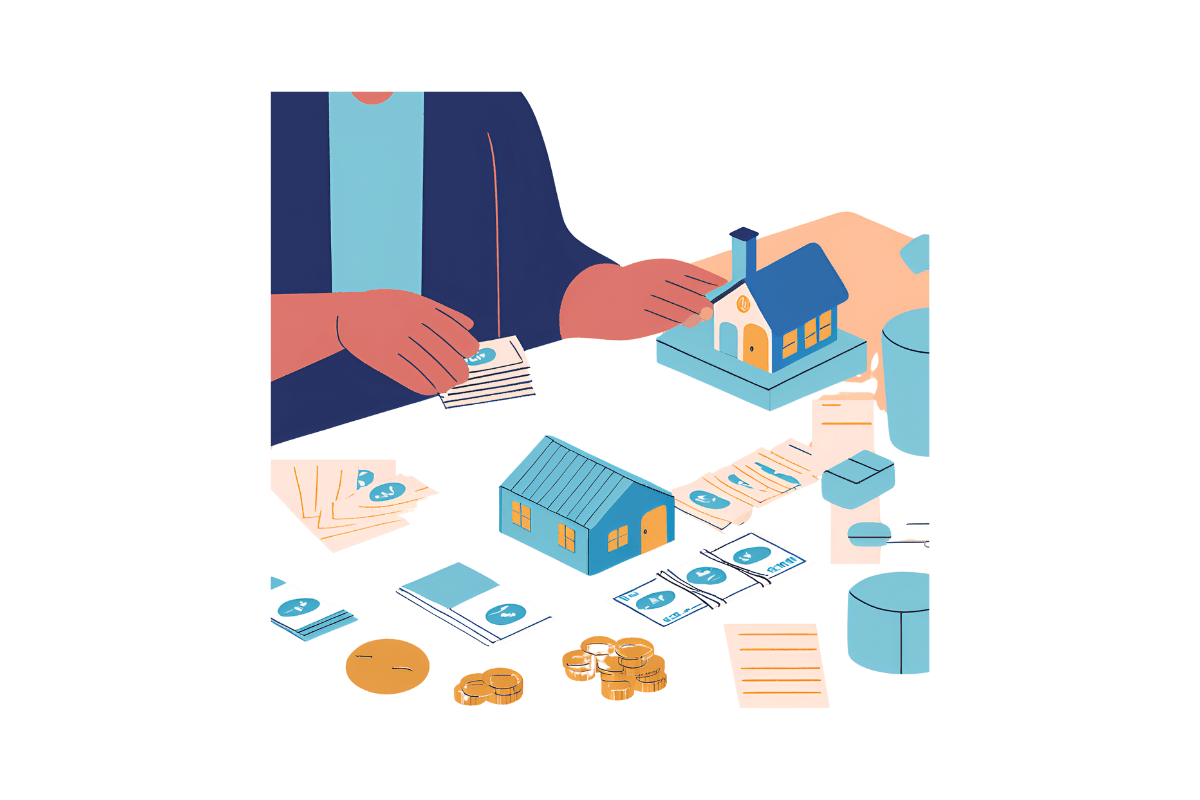Getting by on a single income isn’t always easy, especially with rising costs and everyday expenses that seem to keep adding up.
But don’t worry! Things are about to change. With a bit of planning and smart financial choices, you can stretch that income further and create more security for you and your family.
Below, we’ll get straight into ways to survive on a single income without feeling restricted or stressed.
9 Genius Money-Saving Strategies to Survive (and Thrive!) on a Single Income
This post may contain affiliate links. This means I may earn a commission if you make a purchase through my links, at no additional cost to you. I only recommend products or services that I personally use and believe will add value to my readers.
Contents
- Build a Strong Budget Foundation
- Set Up an Emergency Fund
- Simplify Your Spending & Reduce Monthly Expenses
- Master Grocery Shopping Hacks
- Rethink Credit Card Use
- Create a Plan for Debt Reduction
- Explore Income-Boosting Options
- Prioritize Financial Goals
- Community Support & Resources
- Conclusion

1. Build a Strong Budget Foundation
Living on a single income means every dollar has to work harder. Start by laying out your total monthly expenses, noting what’s essential and what’s flexible.
If you’re stuck on where to start with this, here are the 8 simple steps I make sure I do every payday.
- Track Income vs. Expenses: Look at how much money is coming in and set realistic limits for areas like housing, food, and utilities.
- Automate Savings: Automatic transfers to a savings account can keep you on track and add up over time.
Remember, careful planning now can make it much easier to adjust when unexpected expenses pop up.
2. Set Up an Emergency Fund
One of the best ways to survive on a single income is with an emergency fund. With just one income, unexpected costs, like car repairs or a medical bill, can be harder to manage.
- Set a Savings Target: Aim for three to six months’ worth of expenses.
- Build Slowly: Start small, maybe by setting aside $50 a month. Over time, you’ll be surprised how fast it will add up.
This fund acts as a cushion to help you avoid relying on credit cards or personal loans during emergencies.
3. Simplify Your Spending & Reduce Monthly Expenses
Cutting back on expenses doesn’t mean you have to sacrifice quality of life. Here are a few ways to simplify your spending:
- Review Subscription Services: Cancel any unused streaming services, gym memberships, or apps.
- Lower Your Bills: Ask for lower rates on utilities, internet, or phone plans. Many providers offer deals to keep customers.
- Use Gift Cards for Necessities: Save any gift cards for items you genuinely need. They’re a great way to get a deal without spending cash.
Here are 6 more ways you could be loosing money without realizing! Keeping your expenses low and consistent helps you stay in control and avoid unnecessary stress.
4. Master Grocery Shopping Hacks
For a single-income household, grocery shopping can become a major expense. Here’s how to keep it manageable:
- Meal Plan & Stick to a List: Planning meals in advance saves money and reduces food waste.
- Buy in Bulk for Staples: Stock up on essentials like rice, pasta, and toilet paper to get the best deal.
- Avoid Impulse Buys: Stick to your list, and only buy items you’ll actually use to avoid overspending.
I’ll admit whenever I was running low on food I found it too easy to buy food out or grab a takeaway. By simply meal planning and bulk shopping, it nearly halved my grocery bills each month!
5. Rethink Credit Card Use
Credit cards can be helpful tools, but they’re also one of the biggest debt traps if not used wisely.
- Pay Off Your Balance Monthly: Avoid interest by paying your credit card balance in full each month. Bad dept is one of the first things you should look to resolve when trying to save.
- Consider a Rewards Card: A rewards card can be a good way to earn points on regular expenses.
- Limit Purchases: Avoid using credit cards for non-essentials, and prioritize your monthly budget to stay within your means. I find it really easy to track my spending with my Monzo card, especially when traveling.
This strategy will help you survive on a single income and stay away from high-interest debt. Plus, being able to make the most out of essential purchases.
6. Create a Plan for Debt Reduction
Debt can eat away at a single income quickly, especially if you’re paying high interest rates.
- Start with High-Interest Debt: Pay down credit card debt and personal loans first to save money in the long run.
- Use the Debt Snowball or Avalanche Method: Focus on either the smallest debt (snowball) or the highest interest rate (avalanche) to see progress faster.
- Cut Expenses to Free Up Cash: Redirect any extra money towards paying down debt to build momentum and reduce monthly payments.
Taking steps to eliminate debt can significantly improve your financial stability.
7. Explore Income-Boosting Options
If there’s a little extra time in your week, consider a small side hustle to bring in additional income.
- Freelancing or Remote Gigs: Writing, digital marketing, or virtual assistant work can be flexible and fit around family life.
- Sell Unused Items: Use online marketplaces to declutter and make some extra cash.
- Utilize Skills for Part-Time Work: Childcare, tutoring, or pet-sitting are flexible options for stay-at-home parents or single-income earners.
Even a small side income can ease some financial strain and help you reach savings goals faster.
8. Prioritize Financial Goals
With one income, clear financial goals are essential. Whether it’s saving for a house, setting aside college funds, or building a retirement account, having a plan helps you stay on track.
- Make a Goal-Setting List: Write down your top goals and the steps needed to achieve them.
- Set Short- and Long-Term Goals: Saving for a vacation might be a short-term goal, while building a college fund is a long-term goal.
- Check In Regularly: Review your progress monthly to stay motivated and adjust if needed.
Goal-setting is a great way to make the most of your income and secure your financial future.
9. Community Support & Resources
If you’re in a single-income household, you’re not alone! Many people face the same challenges, and there are resources to help.
- Online Forums & Groups: Join communities where people share tips on living well on a single income.
- Local Resources: Look for programs or discounts for single-income families in your area.
- Ask for Support: Family and friends may have advice or resources they’ve found helpful.
Connecting with others who understand your situation can be incredibly helpful and motivating.
10. Conclusion
Living on a single income takes careful planning and discipline, but it’s very possible to thrive with the right strategies.
Building a budget, cutting unnecessary expenses, and setting clear financial goals will make the journey smoother. Small changes can lead to big savings, and the extra planning today will help create a secure future.
The information provided in this guide is for educational purposes only. Any actions taken based on this information are at the reader’s own risk. It is advisable to consult with relevant professionals or advisors for personalised advice.



